What Are Gutters?
Gutters, just like slim channels or troughs, are placed along the roof edge to catch rainwater and direct this far from the building foundation. They help in downpour control to prevent water damage to siding, windows, doors, or landscape. Depending on the material used, both aluminium and vinyl are options available, while some opt for steel gutters.
Thus, gutters are indeed an important part of any drainage system residing in a house, for these when properly installed can really help increase the life of your property.
What Materials Are Used in Gutters?
A variety of materials can be used in gutters, each with its advantage depending on economics, looks, and climate. Some choose aluminum due to its lightness, resistance to rust, and inexpensive cost. Vinyl gutters are dirt cheap and rather easy to fit but do not stand up so well to harsh weather. Copper gutters will obviously be more expensive:
They give maximum durability with an attractive effect that is somewhat different as the metal develops a patina down the years. Steel, commonly, is carefully strong and suitable for heavy-duty applications, provided it is treated with coatings to withstand rusting. Zinc gutters are an even costlier option but have remained famous for their longevity and good resistance against corrosion.
How to Install Gutters in 8 Steps?
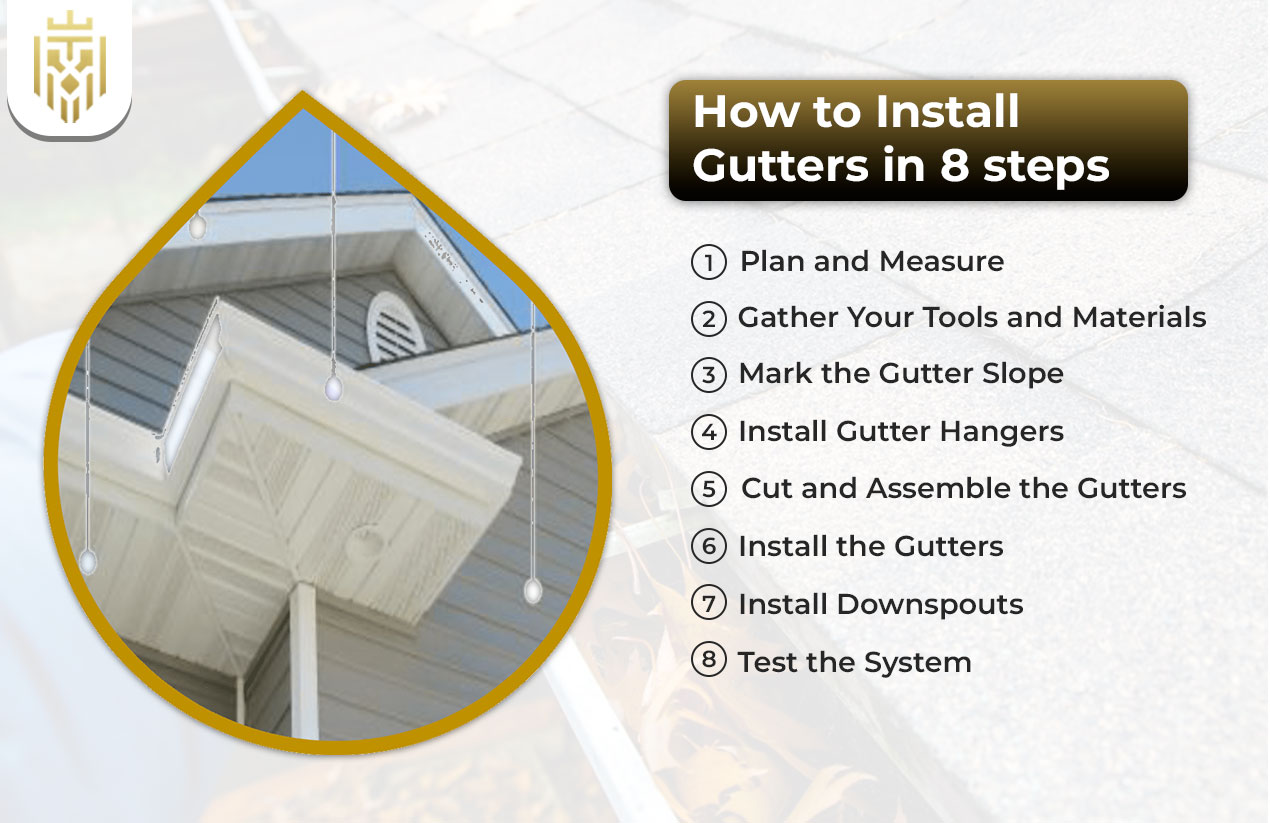
Installing gutters may seem like a task for professionals, but with the right tools and a clear process, it’s a manageable project for experienced DIYers. Below are the eight essential steps to successfully install gutters.
Plan and Measure
First, evaluate the roofline and decide where to put gutters and downspouts. Measure gutter runs, allow for corners, and identify outlets for water. With good planning, one will obtain just enough material and get away with no costly mistakes.
Gather Your Tools and Materials
Collect all necessary tools, including a ladder, tape measure, chalk line, drill, screws, gutter sections, hangers, end caps, sealant, and downspouts. Choose a gutter material that suits your climate, budget, and aesthetic preferences.
Mark the Gutter Slope
Using a chalk line, mark a slight slope of about ¼ inch for every 10 feet of gutter run. This slope will ensure water flows toward the downspouts rather than pooling in the gutter. Start marking from the high point (at the roof’s edge) down to the low point (where the downspout will be located).
Install Gutter Hangers
Fasten the gutter hangers along the fascia board at the line marked with chalk. Hangers should be spaced approximately every 2 feet to allow sufficient support; this framework will hold the gutter in place.
Cut and Assemble the Gutters
Cut the gutter sections with a hacksaw or tin snips according to the measured lengths. Seal and join pieces together, making sure the joint is tight to avoid any leaks. Place end caps wherever needed; elbows should be pre-attached for corners.
Install the Gutters?
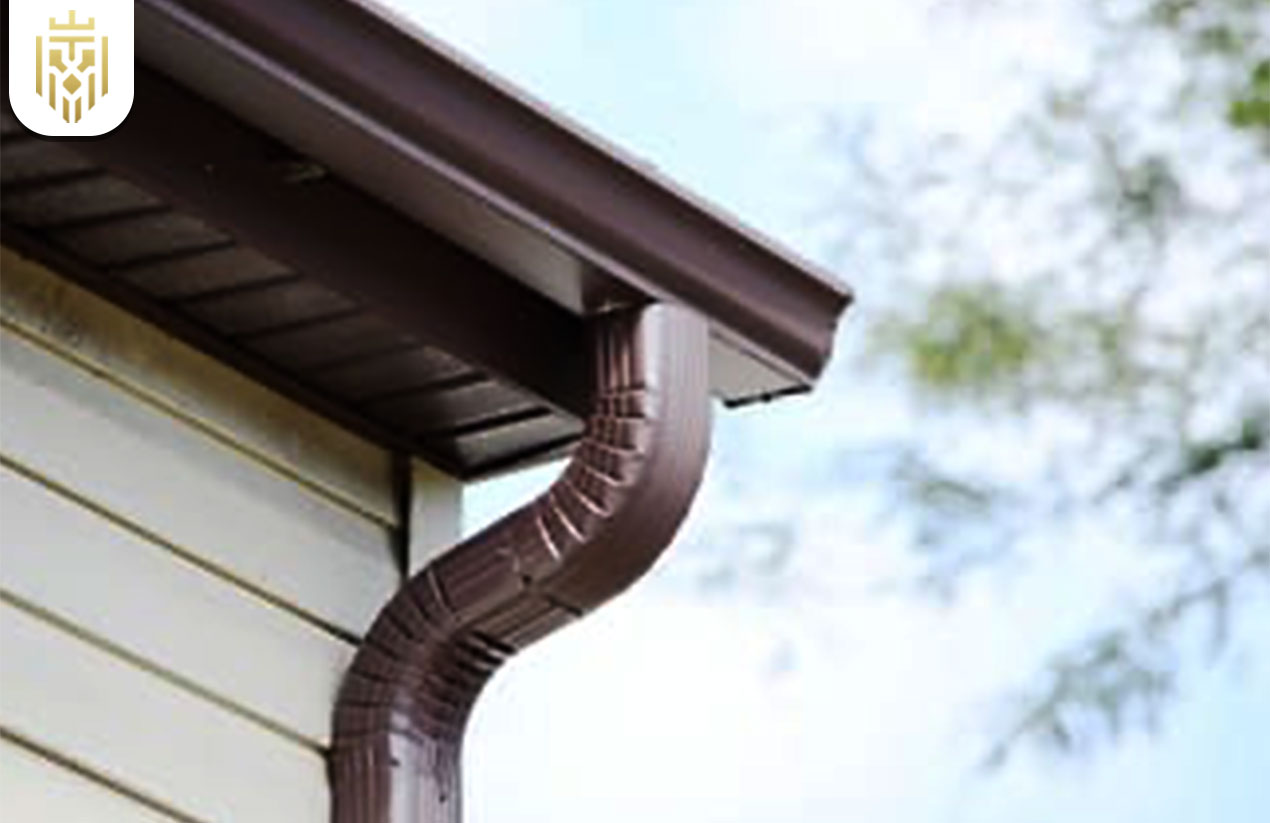
Now install the assembled gutters onto the hangers and fasten with screws. Make sure the gutters are aligned to the slope line, and also check that all joints and connections are sealed well to keep them from leaking.
Install Downspouts
Attach the downspout outlets at the marked low points and downspouts with elbows and screws. Mount them to the exterior wall with brackets spaced 6 to 8 feet apart. Ensure the discharge end of the downspout deflects water sufficiently away from the foundation of your home.
Test the system
Fill the gutter system with water or allow for heavy rainfall to test the setup. Watch for a reasonable flow, any apparent slope issues, leakage signs, or any blockages that might be present. If necessary, adjust to allow for smooth drainage.
How to Install Different Types of Gutters?
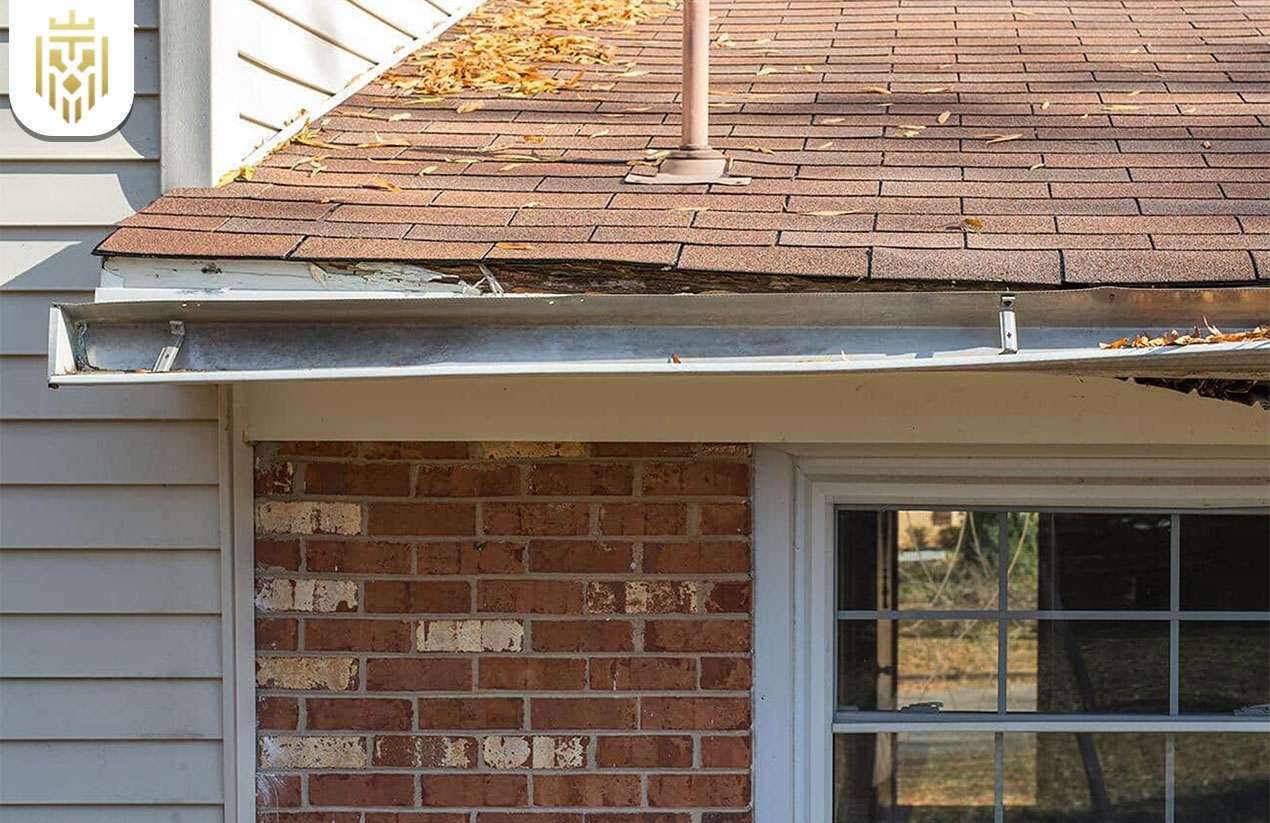
-
How to Install Aluminum Gutters?
Aluminum gutters are lightweight and resist corrosion, making them an excellent option. Measure and cut your gutter sections so that they fit the length of your roof-line. Fix hanger supports along the fascia board so that they follow the required slope. Attach the gutter sections to the hangers, securing the joints with sealant material and screws. Finally, fit the downspouts as described previously.
-
How to Install Vinyl Gutters?
Vinyl gutters are easy to handle and install. First, put together the gutter sections on the ground, joining them with connectors and sealants as recommended by the manufacturer. Next, install the hangers onto the fascia board while ensuring the appropriate slope is maintained. Position the assembled gutters in place, fastening them to the hangers, and then fit the downspouts.
-
How to Install Zinc Gutters?
Zinc gutters are durable and with time turn to a plumb patina. Due to their weight and requirement for soldered joints, the installation should be left to an expert. Measuring correctly, cutting, soldering the joints, and fastening securely to the structure of the gutters and downspouts are some of the steps that take place during installation.
Common Mistakes to Avoid While Installing Gutters
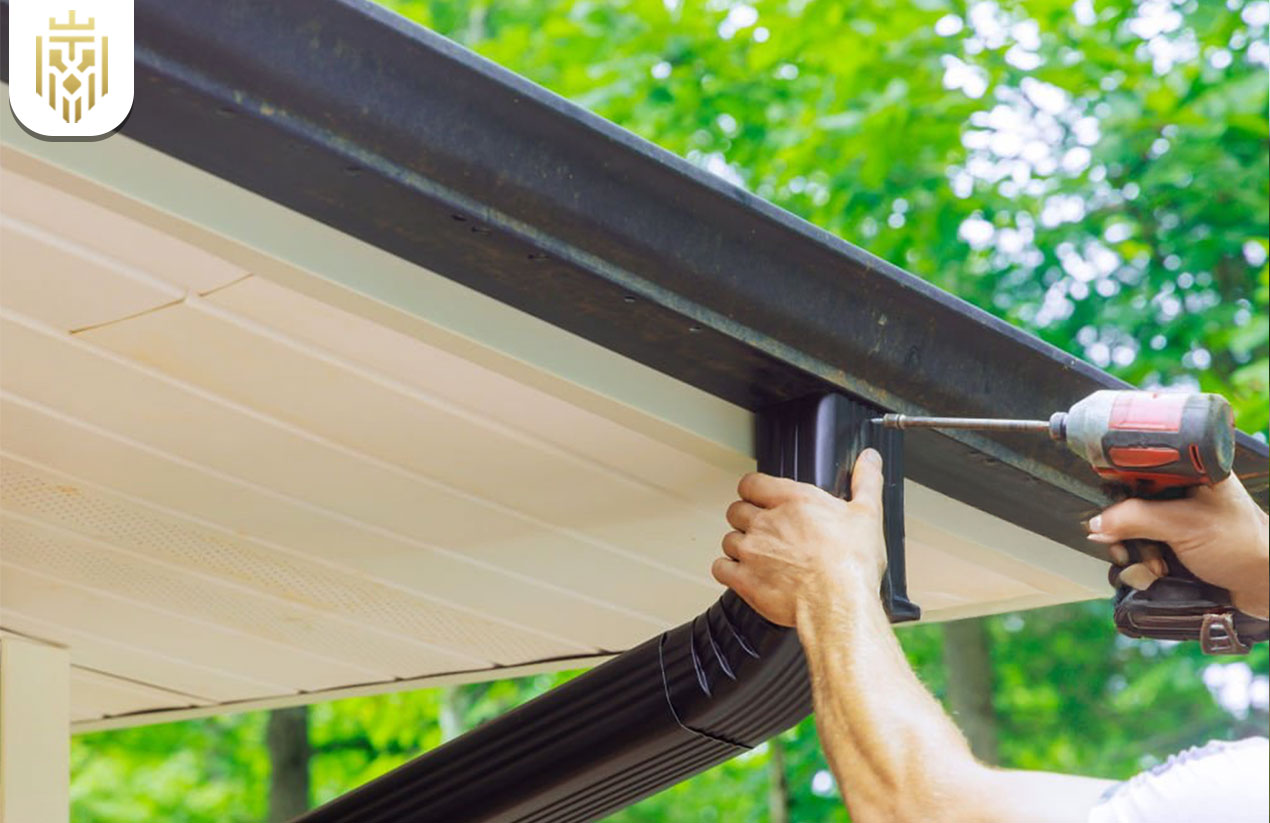
Each type of gutter material has its own installation process, tools, and considerations you should be aware of.
-
Incorrect slope angle
If the slope isn’t maintained correctly, water will stop in the gutter, overflow, and destroy the gutters and even down the walls. Always allow a consistent slope of ¼ inch in 10 ft via the downspouts to allow storm water to flow.
-
Choosing the wrong type of gutter
Selecting a material for gutters ill-suited for your climate or building structure leads to an early death. Consider weather conditions, maintenance requirements, and aesthetic compatibility when deciding on gutter materials.
-
Not sealing joints properly
Improperly sealed joints can lead to leaks and water damage. Always use high-quality sealant on all joints and connections, and allow adequate curing time before exposing the gutters to water.
-
Using too few hangers
Insufficient hangers can cause gutters to sag or detach under the weight of water or debris. Follow manufacturer recommendations for hanger spacing, typically every 24 to 36 inches, to ensure structural integrity.
How to Replace Gutters?
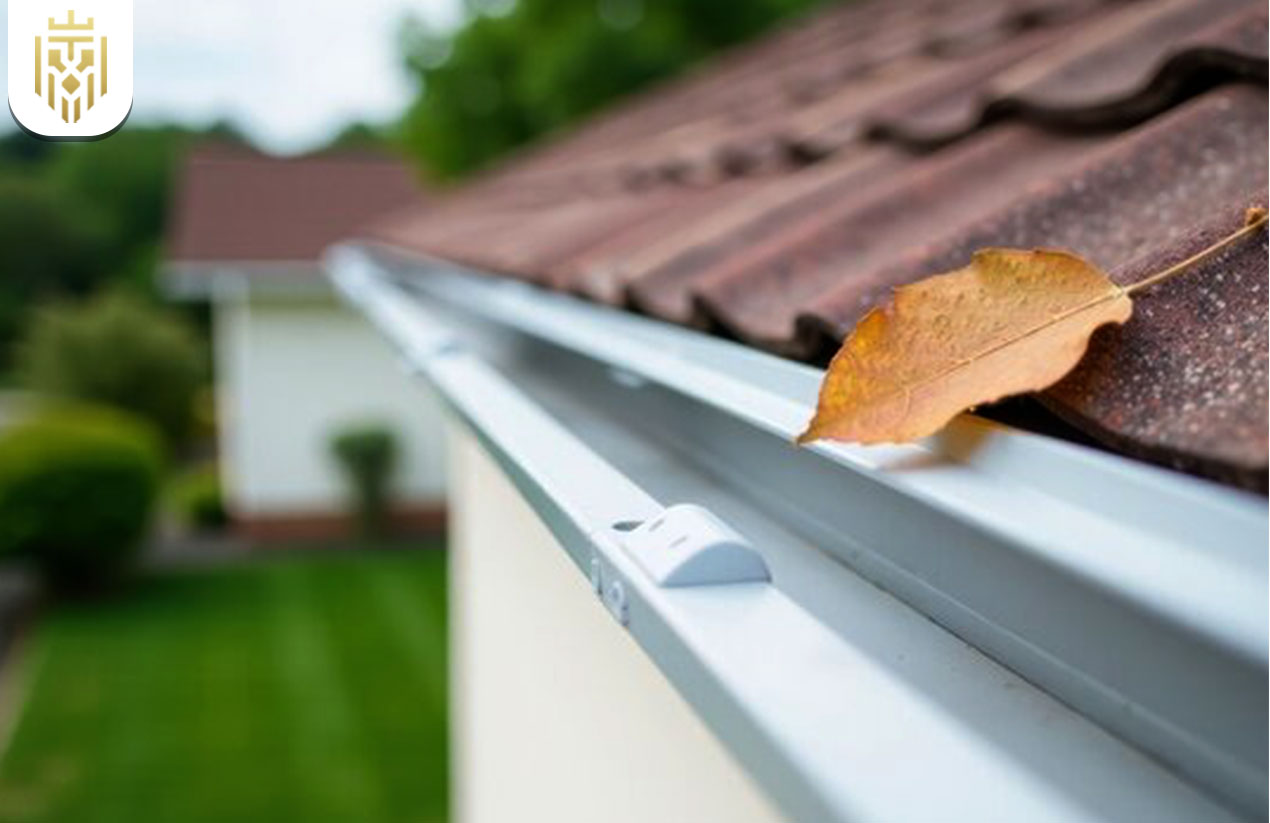
-
Inspect Existing Gutters
Start by inspecting your gutter system for any damage. Typical examples may be rust, cracking, sagging, or leaking. You want to finish by deciding if these gutters require a complete replacement or if repairs will suffice.
-
Remove Old Gutters
The first step to installing new gutters is to remove the old ones. Starting from the downspouts, detach the gutters from the fascia board while working along the gutter runs. Remove all hangers, brackets, and fasteners, disposing of the old materials appropriately.
-
Check Fascia and Soffit Boards
Checking the fascia and soffit boards. Any of these boards will have to be replaced if found to be rotted, damaged, or decayed as they are crucial in providing one of the bases for the gutter system.
-
Measure and Plan
Take measurements of the roofline length where new gutters are to be installed. Set out the downspouts in such a way as to carry water away from the foundation. Set out the required slope so that water can flow properly.
-
Install New Gutter System
Follow the steps outlined above for gutter installation: put up the hangers along the slope that was marked, cut your gutter sections, and put them together and onto the hangers, install your downspouts at the marked locations.
-
Clean the Gutter
Clear debris and any obstruction in the gutters to allow free flow of water after installation. This is important so that the gutters do not get blocked, hence stopping full efficiency of the gutter system.
-
Test the new Gutter
Use the garden hose to get water flow through the new gutters to ensure proper flow and identify any leaks or misaligned joints. If found, fix them or reseal the joints.
How Often Do Gutters Need to Be Replaced?
Gutter replacement depends mainly upon the material and continuous maintenance. Aluminum gutters are among the most common and normally last anywhere from 20 to 30 years, given that the homeowner looks after them properly.
Vinyl gutters are cheaper and relatively easy to install, but due to temperature fluctuations, they tend to last for about 10 to 20 years. Copper gutters, which are durable and beautiful, can easily last for 50 years or more if maintained with a relatively low degree of attention.Steel gutters generally last 15 to 20 years, provided they are kept in an oil-based paint treatment to prevent rusting;
thus, they require like upkeep. A nice expensive solution is zinc gutters, which have a reliable lifespan of 30 to 50 years. No matter what the material is, regular checks, cleaning, and repairs will greatly increase the life span of your gutters. If you find problems repeating like leaking, rust, sagging, and water overflow, then it could be time for a full replacement rather than making a few repairs every now and then.
FAQs
1) What Are Gutters?
These are channels for drainage attached to the roof, upon which the rainwater is projected out of the house safely.
2) What’s the ideal slope for a gutter system?
A slope of 1/4 inch every 10 feet of gutter run is recommended for proper drainage.
3) How to Install Rain Gutters?
Plan, measure, mark for slope, attach hangers, assemble gutters, install them, connect downspouts, and test the system.
4) How to Replace Gutters?
Replacement includes inspecting existing gutters, removing old components, checking and repairing fascia and soffit boards, measuring and planning the new system, installing new gutters and downspouts, cleaning the gutters, and testing for functionality.







